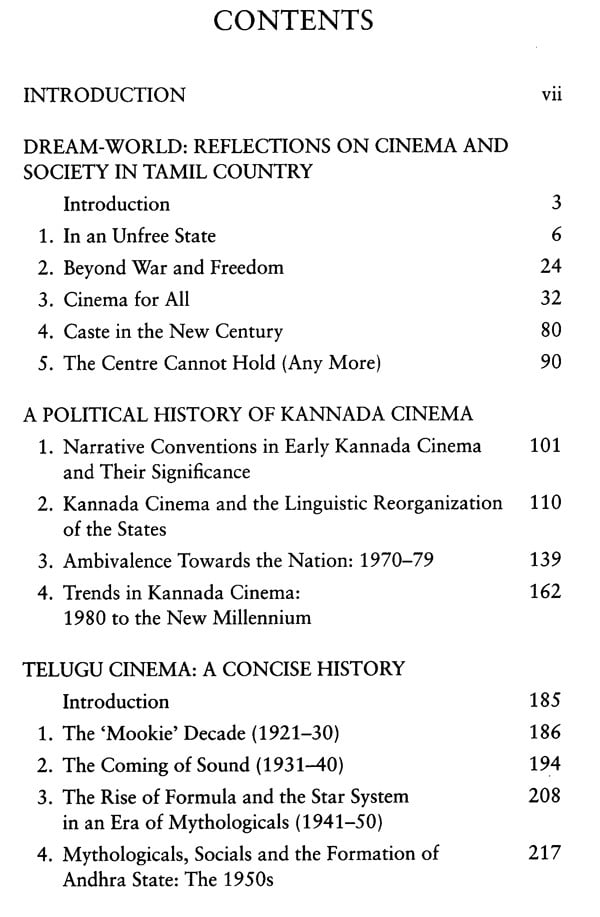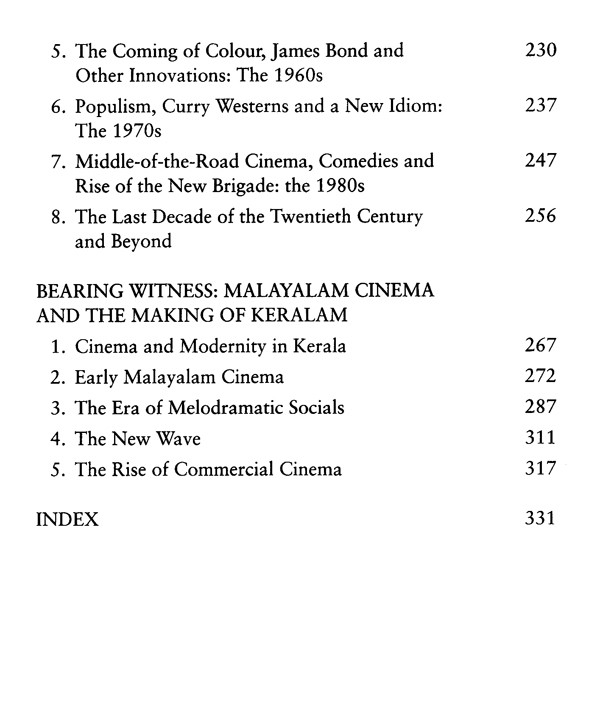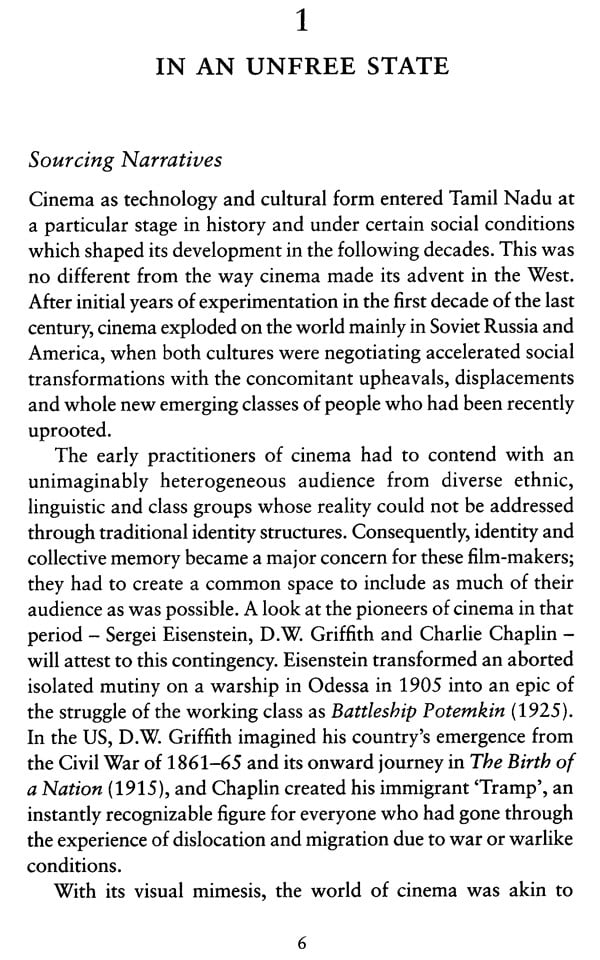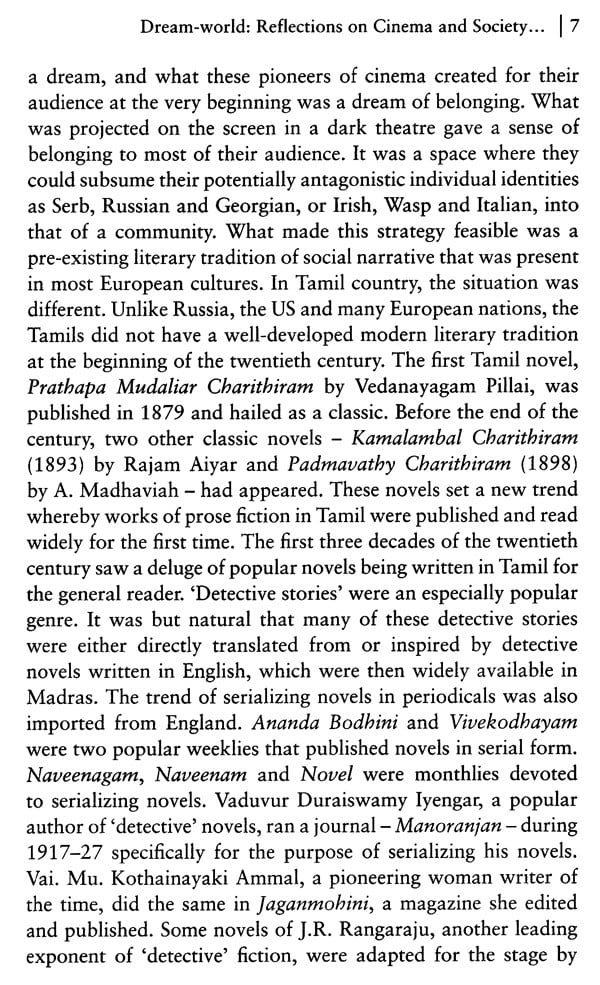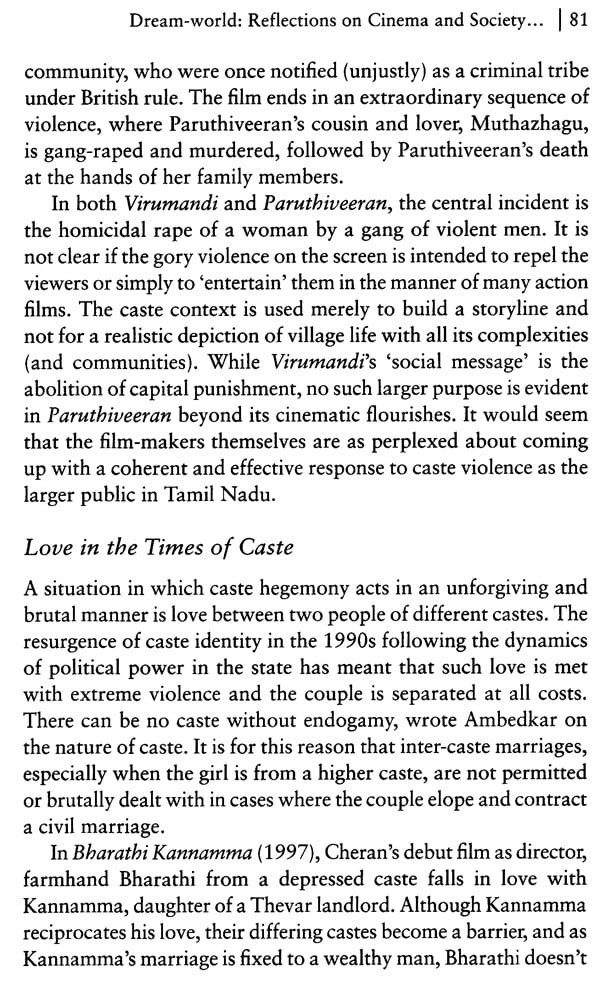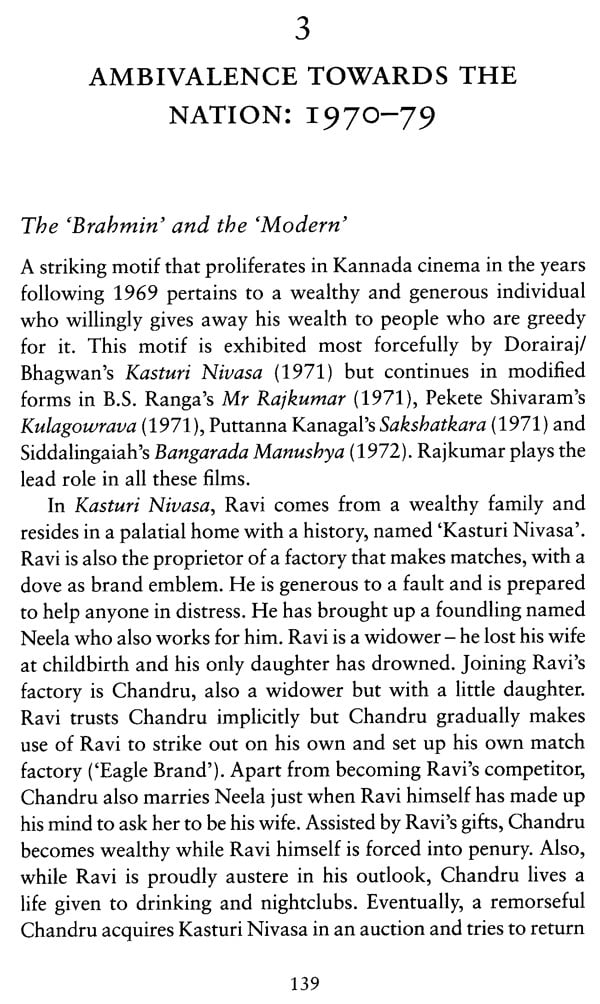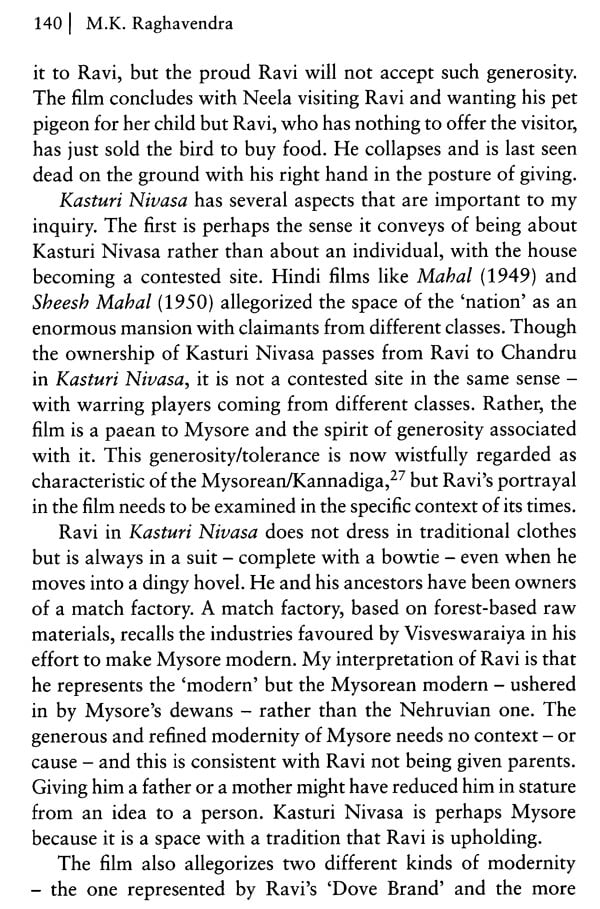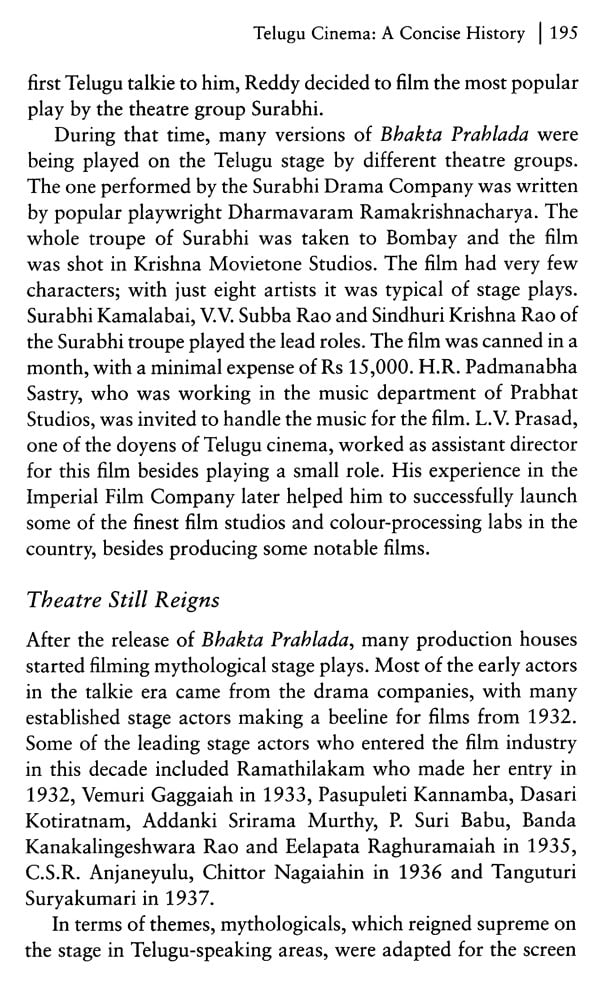
Beyond Bollywood- The Cinemas of South India
Book Specification
| Item Code: | UAC303 |
| Author: | M. K. Raghavendra |
| Publisher: | Harper Collins Publishers |
| Language: | English |
| Edition: | 2017 |
| ISBN: | 9789352645695 |
| Pages: | 339 |
| Cover: | PAPERBACK |
| Other Details | 8.50X5.50 inch |
| Weight | 320 gm |
Book Description
It is well established that cinema is one of the dominant obsessions of the Tamil people. Five of the six chief ministers of the state of Tamil Nadu during the period 1967-2016 had at one time or another worked in the film industry - as scriptwriters, film-makers and actors. Tamil Nadu is home to a flourishing film industry, with Madras (now Chennai) being a top film production centre since before Independence. Of the 1,602 films produced in the country in 2012, 262 were made in Tamil, making the Tamil film industry the biggest in the country, surpassing even Bollywood. Over the years, many accounts have been written about the development of Tamil cinema and its diverse aspects. Most such narratives focus only on the films as given texts and their performance at the box office. Even as an art form, cinema tends to be discussed in terms of the genius of its practitioners. For inexplicable reasons, the audience is always left out of the equation. This is somewhat anomalous since, from a certain perspective, Tamil cinema could not have endured and flourished in the way it has without the enduring passion and support of the people.
Cinema has been primarily a medium of mass entertainment in India and, without a doubt, the public has flocked to the movie theatres primarily for entertainment. However, given that filmic narratives are always embedded in a cultural context, the audiences must have experienced a resonance with the material presented on the screen at least some of the time. It is interesting to explore this question: what were the themes and reflections engaging the wider society that influenced the cultural products of Tamil cinema in discernible ways? What were the limitations that constrained the directions of Tamil cinema at every stage? What were the social aspirations and impulses that helped extend its possibilities? In trying to answer these questions, this essay will seek to place people back at the centre of film history and discuss the continuum of Tamil cinema in tandem with the trajectory of Tamil society as a whole.
While such an attempt is necessary to uncover the continuing connection between cinema and the people, we can also discern below-the-radar phenomena in contemporary society by exploring why certain films were made and received with great enthusiasm at a particular stage in history. Any casual observer of Tamil cinema will find it easy to identify the rise and ebb of particular themes over time. This essay will track such themes more systematically, using available scholarship about historical events and developments to frame the societal context.
The first silent film in Tamil was made in 1916, the first Tamil talkie in 1931. In the period since those milestone events, Tamil country has undergone massive transformations. First, from being a part of a larger territory that constituted Madras Presidency under British rule, it became a state of the republic of India. The second transformation was the formation of the linguistic state of Tamil Nadu in 1956, bringing Tamil people under a distinct political identity. The third commenced with an apparent democratization of politics with the ascendancy of Dravidian parties and the restructuring of social power and influence through state policy. The fourth is the current phase of a neo-liberal economic regime, rapid urbanization, intensified identity politics and a competitive ethos of maximizing personal gratification in a consumer society.
During each of these four historical phases, both individual and society have faced challenges and problems which Tamil cinema has tried to deal with. This essay will seek to explore the mystery of 'what people bring to the cinema' during these four broad phases. The style of exploration will be freewheeling, highlighting (as appropriate) general trends, themes, genres and oeuvres of individual actors and film-makers in tandem with corresponding social trends and historical events. As the relationship between culture and cinema is a two-way movement, with cinema reflecting on and influencing culture and vice versa, my attempt will be to foreground the transactions taking place in this movement.
Since Tamil cinema is a vast subject, it is perhaps useful to set down the contours of this project. This essay deals with the narrative content of only those Tamil films that are seen to have an apparent connection with societal trends and events. In that sense, it stays away from 'entertainment' cinema that runs the gamut from comedies and god stories to gangster films and superstar vehicles. Similarly, it takes no part in the perpetually ongoing discussion on music, cinematography, framing and composition. Finally, it is not informed by theory, critical or otherwise. The reader will find no references here to Andre Bazin, Jean Baudrillard, Walter Benjamin, Gilles Deleuze or Jacques Lacan. That said, I hope this essay will give the reader new ways to think about the relationship between cinema and the society in which she lives and watches films.
**Contents and Sample Pages**
